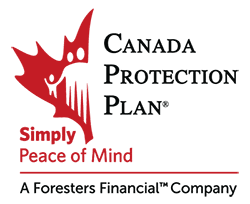
Comparing life insurance policies can be overwhelming, especially when discovering the factors that make a plan expensive. Understanding the main characteristics, conditions, and lifestyle variables that affect the cost of life insurance makes it easier to see why rates vary. It can also help you determine which provider and policy are right for you.
Life insurance providers generally base their rates on an estimate of how long you are likely to live. The longer you live beyond the day you secure your life insurance, the lower the risk to them, and the lower your rate will be. There are many components of this estimate, and each piece carries its weight in the calculation.
Your Health
If you have a serious illness or a medical condition that could shorten your lifespan, your insurance premiums will be higher, and your application may even be rejected. High blood pressure, a family history of heart disease, the medications you’re on, and numerous other factors may be taken into account for both traditional life insurance and life insurance that doesn’t require a physical exam (No Medical insurance)
Your Age
People of any age can secure life insurance, but it usually gets more expensive when you’re older. For example, if you’re close to 80 years old, you’re (statistically) closer to passing away than a 25-year-old, even if you’re very healthy.
Being older also makes you more likely to have a condition that could shorten your lifespan, making you more expensive to insure.
The best time to buy insurance is now, regardless of your age: the younger you are when you get started, the more options you’ll have for policies and providers, and the more affordable your life insurance will be.
Smoking
Smoking puts you at greater risk for many types of cancer and other medical issues. Insurance providers consider this, so you can expect coverage to be more expensive if you’re a smoker. If you’re a heavy smoker, you may have difficulty securing insurance.
Drinking Alcohol
Like smoking, drinking alcohol is a risk factor for many illnesses. It also increases the chances of fatal accidents. Insurance providers may use your drinking habits to determine your eligibility for insurance and it may impact the premiums you will be charged.
Extreme Hobbies and Sports
Most recreational activities won’t prevent you from securing life insurance. If your chosen pastime is inherently dangerous and you participate in it regularly, you may have a challenge finding a good plan at a reasonable price.
Some of the activities that may impact your available life insurance choices are:
- Scuba diving
- Skydiving, hang gliding, and recreational flying
- Rock climbing, ice climbing, and rappelling
- Base jumping, bungee jumping, and cliff diving
- Car, motorcycle, and speedboat racing
- Heli-skiing and back-country skiing
- Competitive boxing, wrestling, and some martial arts
- Hunting
- Travel to hazardous places such as war zones or areas with extreme climates
Different life insurance providers describe extreme sports in different ways. They may use terms like “hazardous pursuits” or “high-risk activities”, and may include activities on their list of exclusions that other providers do not. Some life insurance providers will sell you traditional life insurance if you engage in the sport occasionally instead of every weekend. The key to ensuring you’re covered is to provide truthful and complete answers on your application and to discuss any policy exclusions and ask questions of your advisor before committing.
Dangerous Jobs
What qualifies as a dangerous job may vary from one life insurance provider to another. If you’re exposed to more risk at your job than most people, your work might be considered dangerous, and you could have difficulty securing affordable coverage.
Dangerous jobs can include:
- high-altitude work
- underground work
- work that involves explosives, chemicals, heavy machinery, or firearms
- work that requires travel to a hazardous area or environment.
Specific jobs, such as those in the fishing, mining, and logging industries, are considered inherently dangerous, while others depend on the specifics of the work itself.
A thorough assessment of how dangerous your job may involve asking how often you engage in the hazardous activity, what safety protocols your workplace has, and what specific training or certification you have for the dangerous aspects of your job.
All these factors may leave you wondering if you’ll be able to secure insurance, but don’t despair. Canada Protection Plan has a range of policy options that will cover you even if you have several risk factors. Our No Medical and Simplified Issue Life Insurance is designed specifically for people who have health-related and other lifestyle issues. To apply for this type of life insurance, you need to fill out a questionnaire about your health: no doctor’s exam, blood draws, or needles are required.
And if you have a serious medical condition that’s made it hard for you to secure coverage, our Guaranteed Acceptance Life could be an ideal option.
Read about our plans, and then try our Quick Quote Tool to compare them and see how low your premiums could be!
Contact us directly for more information or further guidance. We’re here to help you secure coverage and get you and your family the peace of mind you deserve.

BLG797-0722EN







